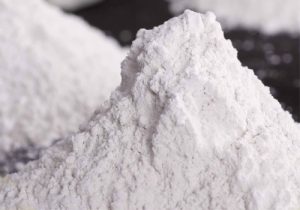
CP-992 Organophilic clay
CP-992 Organophilic Clay, the wet process improved viscosifier and gelling agent . It is a rapidly dispersing.
Thixotropic Agent : To help you achieve your Thixotropic property of paints, this is an additive that is needed in many paint production processes. It is designed to help you improve your Rheological performance.
Of course, it is actually a modified organic bentonite that is widely used in many different fields, lubricants .
We sincerely invite you to visit our factory or website, where you can find all your information about thixotropic additives. You can also directly contact our sales team to obtain the product information you want.

Thixotropic Agent : Camp Shinning is one of the major manufacturers of Thixotropic Agent Organoclay in China. Its professionalism and dominance are obvious. Through long–erm production and practice, Camp Shinning’s organic bentonite has shown excellent thixotropy and suspension performance in paints, coatings, ink gre

CP-992 Organophilic Clay, the wet process improved viscosifier and gelling agent . It is a rapidly dispersing.

CP-982 Organophilic Clay is an amine treated bentonite with a moderate temperature performance.

CP-150 Organophilic Clay is a self-activating organoclay that disperses easily and performs well in diesel, low aromatic mineral oil, modified vegetable oil, and synthetic base fluid formulations.


CP-10 organoclay is a rheological additive made of organoclay. It is used in non-polar to moderately polar aliphatic and other solvent systems

CP-MPZ organoclays is an modified bentonite that is used in solvent and resin systems ranging from non-polar to highly polar.

The CP-MPS rheology modifier is a type of organo clay rheological additive that is used in solvent and resin systems ranging from non-polar to high polarity.


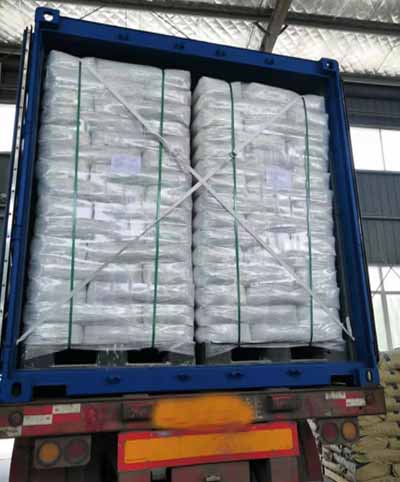
Organoclay Supplier / Manufacturer :
Internet address: https://www.rheologymodifiers.com/
Email address: [email protected]
Whatsapp / Wechat: +86-13185071071
Organophilic Clay Supplier / Manufacturer :

CP-EW Organoclay for Water Based paint. It is primarily employed in water borne paint systems,such as latex paint. So it is a good water based additive in paints,coatings,grease etc.

CP-EWS Modified bentonite It is employed in a water-borne coatings system. CP-EWS organoclay outperforms CP-EW in terms of thixotropy, transparence, and dispersion.

CP-WBS Rheology Modifier is rheological modified bentonite. It is mostly employed in water-borne systems.
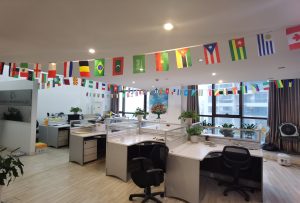

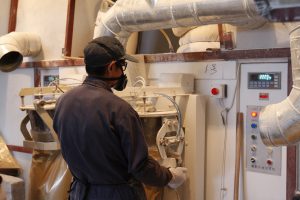


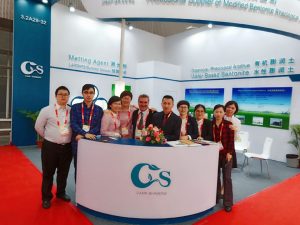
The Organoclay bentonite | Organophilic clay -specialized Zhejiang Camp-Shinning New Material CO.,LTD. and Hangzhou Camp-Shinning CO.,LTD. are subsidiaries of Camp-Shinning.
Camp-shinning concentrated on high value-added, high-technology organo bentonite series products, particularly in research, development, manufacturing, and sales of organic (solvent based organoclay) and inorganic bentonite (water based organoclay).
Our Organophilic bentonite clay finds widespread application in oil drilling mud, paint, coating, lubricating grease, adhesive, construction mortar, cosmetics, and waste water treatment, among other applications. A group of world-class professional users and distributors, such as SUN CHEMICAL,,SIEGWERK,LEHMANN &VOsS, and others, have acknowledged our dependable quality.
Current annual production of organic bentonite clay | organoclay is 20,000 metric tons, while refined bentonite production is 15,000 metric tons.
Our ISO 9001 quality system certification and IS014001 environmental management system certification, as well as our own mine with superior ore quality and production of proprietary technology, ensure the long-term quality and supply stability of our Organoclay bentonite | Organophilic clay.
Our mission is to provide users with superior Organoclay bentonite | Organophilic clay and services and to collaborate with them to achieve success and glory.
Internet address: https://www.rheologymodifiers.com/ and email address: [email protected]
Whatsapp / Wechat: +86-13185071071
Organoclay | Organophilic Clay CP-2 also named amine treated Bentonite.
In diesel oil based fluids,organophilic clay viscosifier CP-2 are used to increase carrying capacity and suspension properties, providing support for weight materials and improved cutting removal. Organophilic bentonite also aids in filter-cake formation and filtration control.
Properties
Composition Organically modified bentonite clay
Physical appearance Off white to tan free-flowing powder
Moisture content (105℃,2hr) ≤4%
Particle size (<76μm or 200mesh) ≥95%
Specific Gravity 1.6-1.8
Advantages
Effective viscosifier and gellant
Aids control of fluid loss to the formation
Increases emulsion stability
Improves cuttings carrying and hole cleaning capacity
Suspends weighting materials and other solids
Confers temperature stability to the fluid
Application
Base oil:
Diesel Oils
Crude Oils
Mineral Oils
Synthetic Oil
Viscosifying drilling Fluids:
Oil based drilling fluids
Invert emulsion fluids
Workover fluids
Completion fluids
Casing packs
Packer fluids
Spotting fluids
Package
Organoclay | Organophilic Clay CP-2 is packed in 50lb(22.7kg) or 25kg/bag or customized,multi-wall paper sacks or Kraft paper bag with PE liner or customized.
Storage
CP-2 Store in a dry, well-ventilated area with temperature of 0℃-30℃. Keep container closed. The quality guarantee period is 24 months.
Notice
The information on use is based on data which are believed reliable, but any recommendation or suggestion made is without guarantee or warranty, since the conditions of use are outside our control. All products are sold on the conditions that purchasers shall make their own tests to determine the suitability of such products for their purpose and that all risks are assumed by user. We disclaim any responsibility for damages resulting from careless or improper handling or use. Nothing herein is to be taken as permission, inducement or recommendation to practice any patented invention without a license.
Internet address: https://www.rheologicaladditive.com/ and email address: [email protected]
Whatsapp / Wechat: +86-13185071071
Thixotropic Agent Organoclay
Organoclay can be effectively dried to make it appropriate for use in nonaqueous settings. The clay is typically dried to a moisture percentage of under 2%. Lower than 120 degrees Celsius is the drying temperature.
The interaction between the organoclay and the surfactant is a major determinant of the dispersion properties of organoclay in organic solvents. Additionally, polarity and shearing time play significant roles in influencing how organoclay responds to various organic solvents. Organoclay’s level of dispersion in organic solvents hasn’t been fully explained, though.
In oil-drilling muds, the rheological behavior of organoclay was studied.
We looked at how oil drilling muds were affected by organoclay and organohectorite. By carrying out morphological and rheological experiments at various temperatures, ranging from two to 65 degrees C, the results of this study were analyzed.
Additionally, Thixotropic Agent Organoclay can be disseminated at the nanoscale level and then interact with the matrix of the polymer. This makes it possible to create polymer nanocomposites. Organoclay finds a lot of use in polymer nanocomposites.
Organoclays are frequently employed in the treatment of water and work well with other techniques. For instance, the removal of organic compounds from water is very successful when using granular-activated carbon. Organoclays, on the other hand, are excellent in treating greasy wastewaters.
Preparation techniques for organophilic clays
A Thixotropic Agent Organoclaysuspension is reacted with a specific organic solution to create organophilic clays. Their ability for absorption is based on the like attracts like rule. The clay molecules will adhere to the clay particles’ surfaces in a water-rich solution.
Bentonite clay Thixotropic Agent Organoclay is an illustration of an organophilic clay. It can exchange at least 60 milliequivalents of cations per 100 grams. It has an ammonium content of 60 to 100 milliequivalents and is completely active. Its capacity is influenced by the water’s sodium and calcium ion content.
An additional illustration of an organophilic clay is one made with a tetraalkylammonium salt. Other organophilic clays can’t compare to the effectiveness of this kind of clay. It offers higher emulsion stability during drilling, particularly at high temperatures.
Ion exchange can also be used to create organophilic clay. Organophilic clay can then be created by processing the obtained material.
Different temperatures can be used to conduct the ion-exchange reaction. At 35 to 75 degrees Celsius, the reaction can take place and better features can be obtained. However, depending on the selectivity of organic cations, a greater temperature does not always imply a high hydrophobicity.
In tests, mineral oil containing 9% by weight of organoclay and 1.0% propylene carbonate was used. After that, the mixture was stirred for 45 minutes. A polar activator was then added to the bulk after mixing, and the resulting powder was then ground in a colloidal mill or a homogenizer. After that, a 200 mesh screen was used to sift the powder.
For Thixotropic Agent Organoclay, quaternary ammonium salts are utilized as ion exchange agents. Fatty acids can be used to create quaternary ammonium salts, which are soluble in water.
Surfactant types’ effects on interlayer spacing
Different surfactant types affect thixotropic drugs’ interlayer spacing in different ways. Low viscosity high-molecular-weight compatabilizers, like propylene carbonate, are frequently used with modest amounts of organoclay. These polar activators change the van der Waals attraction between surfactant chains and the clay surface, which aids in the delamination and dispersion of organoclay. By bridging between hydrophilic platelet edges, they also aid gelation.
The cation exchange capacity and alkyl chain length of different surfactant types can have an impact on interlayer spacing. We noticed that as the surfactant loading grew, the organoclay’s interlayer gap did as well. The CEC of the organoclay had no discernible impact on this behavior.
Utilizing several surfactant types with variable chain lengths, the effects of surfactant types on the interlayer spacing of thixotropic agents organoclay were studied.
Dispersion of organoclay that is thermally stable
For two main reasons, the thermal stability of organoclay distributed in polymer nanocomposites was investigated.
The quantity of alkyl chains has an impact on the thermal stability of organoclays.Thixotropic Agent Organoclay with more chains have less thermal stability. However, more alkyl chains equate to more interlayer space between the organoclays. The surfactants can now be exposed to air more readily as a result.
Organoclay Supplier / Manufacturer :
Internet address: https://www.rheologymodifiers.com/
Email address: [email protected]
Whatsapp / Wechat: +86-13185071071
Organophilic Clay Supplier / Manufacturer :

CP-180 organoclay is an organo clay rheological additive (modified montmorillonite) designed specifically for use in solvent-based systems

CP-34 organoclay is a modified bentonite that has been specifically designed for use in solvent-based systems.

CP-EDS modified bentonite is a kind of organo clay rheological additive. It is used in systems of medium polarity and high polarity system.
Thixotropic Agent